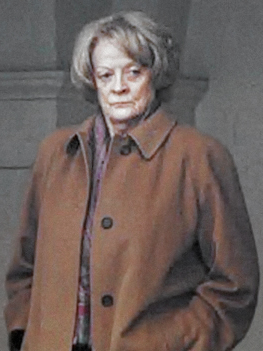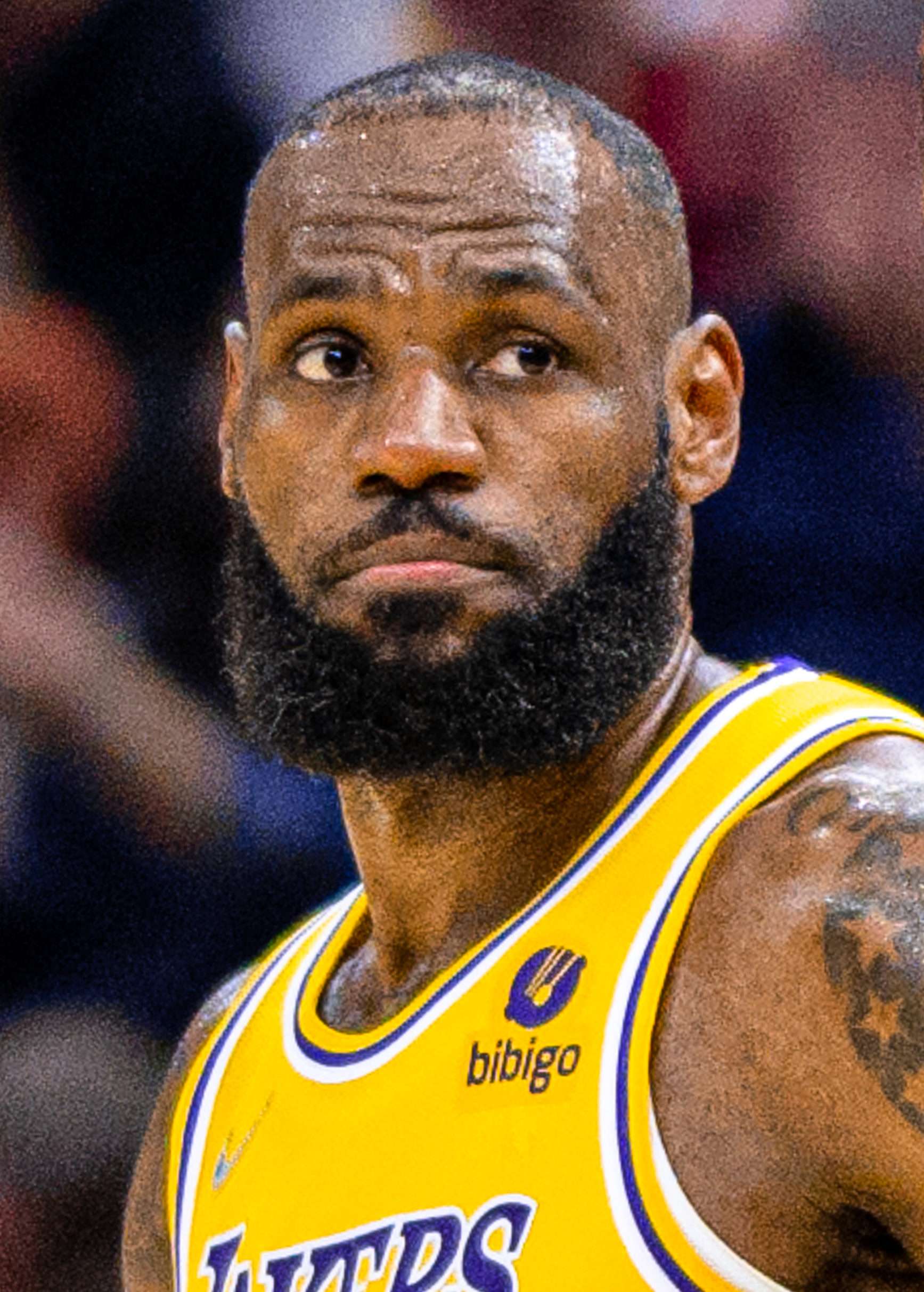
In the pantheon of basketball legends, few names resonate with the sheer power, longevity, and impact of LeBron James. His journey, meticulously documented through every game, every clutch shot, and every jersey he’s donned, paints a vivid picture of a career defined by unparalleled expectation and even more unparalleled achievement. From the moment he burst onto the national scene as a high school prodigy to his current reign as the NBA’s all-time leading scorer, James has not merely played the game; he has fundamentally reshaped it, setting new benchmarks for individual excellence and team success.
His game-worn jerseys are more than just fabric and stitching; they are historical artifacts, each one a testament to a specific chapter in a sporting saga that has captivated millions. These uniforms carry the sweat and triumphs of pivotal moments, marking the evolution of a player who seamlessly blended scoring prowess, elite passing, and physical dominance. Each color, each number, tells a story of an era, a challenge overcome, or a legacy forged, offering a tangible connection to the milestones that have cemented his status as ‘King James.’
Join us as we take a deep dive into the initial chapters of LeBron James’ storied career, examining the first half of the iconic jerseys that chronicle his ascent to superstardom. These threads not only represent the teams he played for but also symbolize the dramatic shifts in public perception, the intense pressures he faced, and the foundational moments that laid the groundwork for one of the most remarkable careers in sports history. From Akron’s humble beginnings to his transformative decision, these are the jerseys that began to etch his name into basketball immortality.
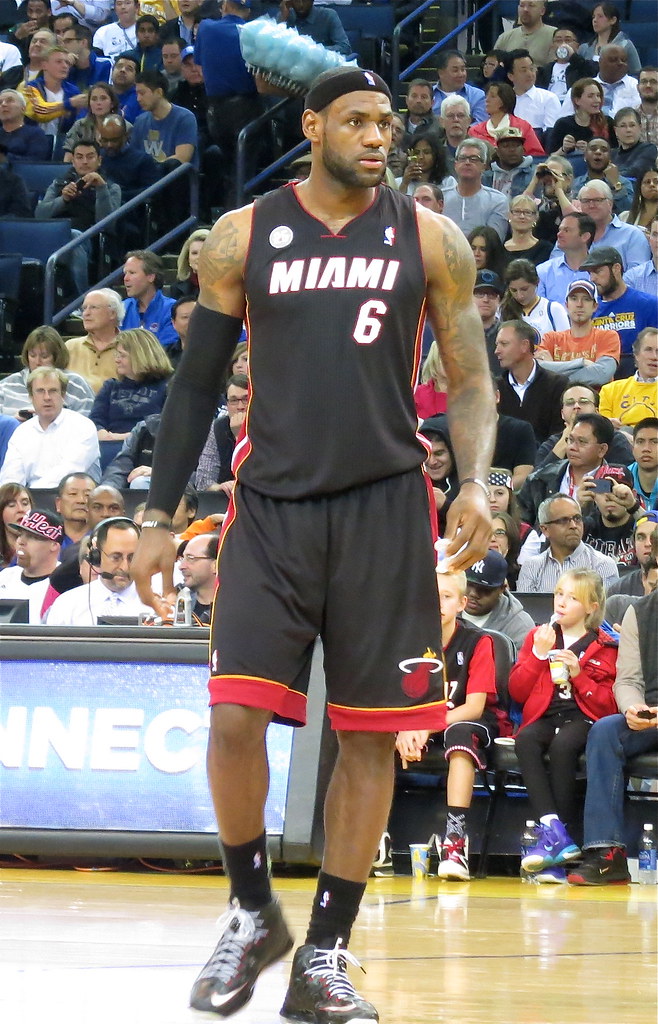
1. **St. Vincent–St. Mary High School: The Chosen One Emerges**Before the bright lights of the NBA, before the ‘King James’ moniker became universal, there was LeBron Raymone James, a high school phenomenon from Akron, Ohio. His St. Vincent–St. Mary High School jersey isn’t just a relic of prep basketball; it’s the genesis point, the uniform of a generational talent whose arrival was heralded with unprecedented fanfare. From his freshman year, where he averaged 18 points and 6.2 rebounds per game, leading the Fighting Irish to a 27–0 record and a Division III state title, it was clear a superstar was in the making.
As a sophomore, James’ dominance continued, averaging 25.3 points, 7.4 rebounds, 5.5 assists, and 3.7 steals. Such was the demand to witness his talent that some home games were moved to the University of Akron’s 5,492-seat Rhodes Arena. He became the first sophomore ever to be named Ohio Mr. Basketball and selected to the USA Today All-USA First Team, signaling that his high school career was charting a course previously unknown to players his age.
By his junior year, now a towering 6 feet 7 inches, James graced the cover of Sports Illustrated, a first for a high school basketball underclassman. His averages of 28 points, 8.9 rebounds, 6 assists, and 3 steals per game earned him his second Ohio Mr. Basketball title and the Gatorade National Player of the Year award. The constant media attention, however, brought immense pressure, even leading to a brief, unsuccessful petition to enter the 2002 NBA draft, illustrating the extraordinary circumstances surrounding his teenage years. This jersey represents the raw potential and the dawning of an era that would soon redefine professional basketball.
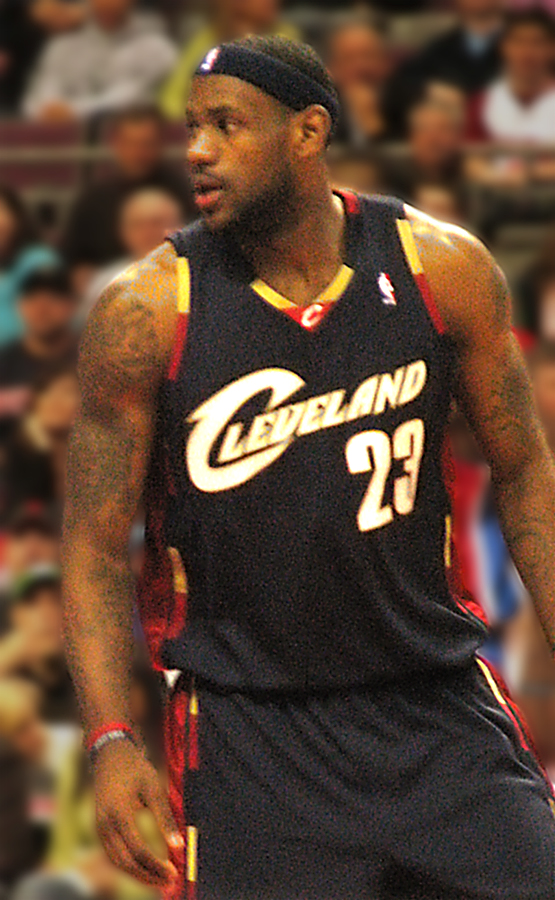
2. **Cleveland Cavaliers (2003–2004): Rookie of the Year’s Grand Entrance**When LeBron James donned the Cleveland Cavaliers’ Wine and Gold jersey as the first overall pick of the 2003 NBA draft, it wasn’t just a team selection; it was a homecoming for the Akron native. Choosing the number 23 in homage to Michael Jordan, James stepped onto the professional stage with a blend of anticipation and immense pressure. In his very first regular season game, he scored 25 points, setting an NBA record for the most points by a prep-to-pro player in a debut, immediately signaling that the hype was justified.
His rookie season was a statistical marvel, as he became the first Cavalier to win the NBA Rookie of the Year Award. He joined an exclusive club with Oscar Robertson and Michael Jordan as only the third player in league history to average at least 20 points, five rebounds, and five assists per game as a rookie. This level of all-around production from a first-year player was virtually unprecedented, showcasing his immediate impact on every facet of the game.
Despite James’ individual brilliance, the Cavaliers finished the season 35–47, falling short of the playoffs. However, this marked an 18-game improvement over the previous year, demonstrating the profound effect his presence alone had on the franchise. This jersey symbolizes not only the promising start of an individual career but also the initial glimmer of hope he brought to a long-suffering Cleveland fanbase, laying the groundwork for future aspirations.
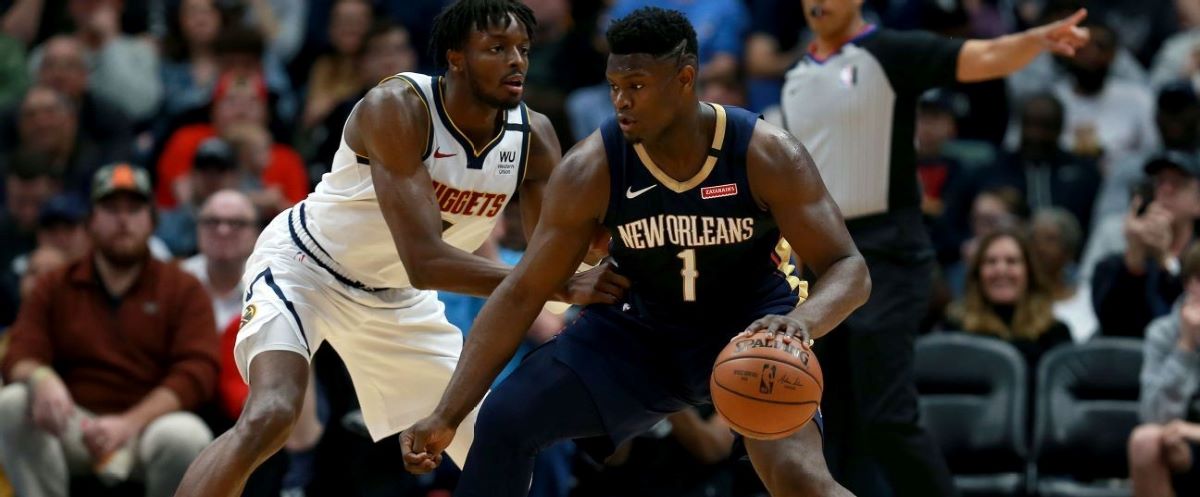
3. **Cleveland Cavaliers (2004–2008): The Ascent to Superstardom and First Finals Berth**The years following his rookie campaign saw LeBron James rapidly evolve from a promising young talent into an undeniable superstar, all while wearing the iconic Cavaliers jersey. The 2004–2005 season marked his first NBA All-Star Game selection, and his consistent, rapid development became the talk of the league. Denver Nuggets coach George Karl aptly described him as “the exception to almost every rule,” a 20-year-old playing with the wisdom and skill of a seasoned veteran.
On March 20, 2005, James shattered Cleveland’s single-game scoring record with an astonishing 56 points against the Toronto Raptors. His individual accolades continued to pile up, earning him his first All-NBA Team selection by the end of the season. Despite another playoff miss that year, the team’s trajectory was clearly upward, fueled by their burgeoning leader. The 2006 offseason saw James commit to a three-year, $60 million extension, aligning his future with fellow draft class members Dwyane Wade and Chris Bosh, a hint at the strategic foresight that would later define his career moves.
The 2006 All-Star Game saw James lead the East to victory with 29 points, earning him his first NBA All-Star Game MVP award. More importantly, under his leadership, the Cavaliers qualified for the playoffs for the first time since 1998, a significant breakthrough for the franchise. His postseason debut featured a triple-double, and he delivered game-winning shots in Game 3 and Game 5 against the Washington Wizards, showcasing his clutch gene. Though the Cavaliers were ultimately ousted by the Detroit Pistons, this period established James as an undeniable force capable of elevating his team to the postseason.
The 2006–2007 season was monumental, culminating in the Cavaliers’ first-ever Eastern Conference championship. James’ performance in Game 5 of the Eastern Conference Finals against the Pistons, where he scored 48 points, including 29 of Cleveland’s last 30 and 25 straight, is etched in NBA lore. Marv Albert called it “one of the greatest moments in postseason history,” and Steve Kerr labeled it “[Michael] Jordan-esque.” This Herculean effort propelled Cleveland to the Finals, where they faced the San Antonio Spurs. Though they were swept, James averaged 22 points, 7.0 rebounds, and 6.8 assists per game, even against a stifling Spurs defense geared solely to stop him. This jersey symbolizes his undeniable rise, his first taste of the Finals, and his growing mastery of the game.

4. **Cleveland Cavaliers (2008–2010): The Back-to-Back MVP Seasons**The Cavaliers jersey during the 2008-2010 period represents LeBron James at the peak of his first stint in Cleveland, where he solidified his status as the league’s most dominant player, earning consecutive MVP awards. The 2008–2009 season saw him finish second in NBA Defensive Player of the Year voting and make his first NBA All-Defensive Team, demonstrating his comprehensive two-way impact. He led his team in points, rebounds, assists, steals, and blocks, a rare feat for any player, let alone one carrying the offensive burden he did.
With the addition of All-Star guard Mo Williams, Cleveland achieved a franchise-record 66–16 record, falling just one game shy of tying the best home record in league history. James’ individual brilliance culminated in his first NBA MVP Award, a historic moment for both him and the Cavaliers franchise. ESPN’s John Hollinger lauded his performance, writing, “He’s having what is arguably the greatest individual season in history, and it’s time we gave him his due for it.” This jersey became synonymous with unparalleled individual excellence and a team that consistently topped the regular season standings.
Despite sweeping the Detroit Pistons and Atlanta Hawks in the playoffs, the Cavaliers faced an unexpected challenge in the Eastern Conference Finals against the Orlando Magic. James delivered another legendary performance in Game 1 with 49 points on 66 percent shooting, and hit a game-winner in Game 2. However, the Magic ultimately prevailed in six games. James’ post-series departure from the court without shaking hands drew criticism, but his playoff averages of 38.5 points, 8.3 rebounds, and 8.0 assists per game were indicative of his extraordinary individual effort, finishing the postseason with a career playoff-high 35.3 points per game.
The 2009–10 season saw James continue his dominance, earning his second consecutive NBA MVP Award despite playing just 39 minutes per game and temporarily shifting to a point guard role due to injuries. Cleveland once again finished with the best record in the league. However, their playoff journey ended prematurely against the Boston Celtics in the second round, a series where James was heavily criticized for his Game 5 performance. His final game in this jersey for his first stint in Cleveland was a 27-point, 19-rebound, 10-assist effort in a losing cause, a statistical testament to his singular effort amidst team shortcomings.

5. **Miami Heat (2010–2011): The Decision and the Birth of a ‘Villain’**The Miami Heat jersey from the 2010–2011 season represents perhaps the most polarizing moment of LeBron James’ career: ‘The Decision.’ His choice to leave his hometown Cavaliers as an unrestricted free agent and join Dwyane Wade and Chris Bosh in Miami, announced on a nationally televised ESPN special, sent shockwaves through the sports world. This controversial move was scrutinized intensely, with many criticizing the prolonged wait and the public nature of the announcement, which raised $2.5 million for charity but simultaneously ignited a firestorm of negative public opinion.
Upon signing a 6-year, $110 million contract through a sign-and-trade deal, James changed his jersey number to 6, as number 23 was retired in Miami for Michael Jordan. He, Bosh, and Wade were heralded at a rock concert-like welcome party, where James’ prediction of multiple championships further fueled the public’s perception of the new “Big Three” as a villainous superteam. The narrative intensified, painting James as one of America’s most disliked athletes, a stark contrast to his previous reputation.
Throughout the 2010–11 season, the media and opposing fanbases relished in treating James and the Heat as antagonists. The team struggled initially, going 9–8 in their first 17 games, with James later admitting the constant negativity made him play with an angrier demeanor. His return to Cleveland was met with a chorus of boos every time he touched the ball, underscoring the depth of the betrayal felt by his former fanbase. This jersey represents a period of immense personal and professional adjustment for James, as he embraced a new role as the league’s antagonist while navigating the pressures of unprecedented team expectations.
Despite the early struggles and intense scrutiny, the Heat found their rhythm, finishing as the East’s second seed. In the Eastern Conference Semifinals, James led a series-clinching win against the Boston Celtics, famously kneeling on the court in an emotional moment he described as deeply personal. Miami advanced to the NBA Finals but ultimately fell to the Dallas Mavericks in six games. James received the brunt of the criticism for the loss, particularly for his struggles in the fourth quarter, with his Finals scoring average dropping significantly from the regular season. This period, marked by a jersey change and a shift in public perception, was a crucial, albeit challenging, proving ground for the superstar, setting the stage for the redemption and triumphs that would soon follow.
Following the tumultuous initial season in Miami, a new chapter of LeBron James’ career began to unfold, marked by an intense focus on team success and an undeniable quest for championships. The jerseys he wore during this period aren’t just mementos of individual brilliance; they are the vibrant tapestries of triumph, embodying the collective spirit of a player who learned to lead a superteam to the pinnacle of basketball. From South Beach’s back-to-back titles to a historic homecoming, and finally, to forging a new dynasty in Los Angeles, these uniforms encapsulate the story of a legend solidifying his place in history, achieving new levels of greatness across multiple franchises, and ultimately becoming the elder statesman of the league.

6. **Miami Heat (2011–2013): Back-to-Back Championships**The Miami Heat jersey from the 2011-2013 seasons represents LeBron James’ transformative years, where he shed the ‘villain’ narrative and embraced a new, more joyful approach to the game, leading the Heat to consecutive NBA championships. Humbled by the previous season’s Finals loss to the Mavericks, James used the lockout-extended summer to refine his post-up game, even working with legendary center Hakeem Olajuwon. This renewed focus, coupled with a shift in mindset, saw Miami start the 2011–2012 season with a franchise-best 18–6 record, eventually leading to James earning his third NBA MVP award.
The true test of this revamped approach came in the 2012 playoffs. When teammate Chris Bosh went down with an abdominal injury and the Heat trailed the Indiana Pacers 2-1, James delivered a monumental 40-point, 18-rebound, and nine-assist performance in Game 4 to even the series. Adapting to Bosh’s absence, the Heat deployed a small-ball lineup with James at power forward, a strategic adjustment they maintained even after Bosh’s return. This culminated in a “career-defining performance” in Game 6 of the Eastern Conference Finals against the Boston Celtics, where James recorded 45 points and 15 rebounds to force a Game 7, which Miami subsequently won.
Advancing to the NBA Finals against Kevin Durant’s Oklahoma City Thunder, James continued his relentless pursuit of a title. Despite missing time with leg cramps, he hit a crucial three-pointer late in Game 4, helping secure a critical win. In Game 5, he registered a triple-double as Miami clinched their second-ever championship, marking James’ first career title. His dominance earned him the unanimous Bill Russell NBA Finals Most Valuable Player award, averaging 28.6 points, 10.2 rebounds, and 7.4 assists per game. This entire postseason run, with averages of 30.3 points, 9.7 rebounds, and 5.6 assists per game, was later ranked by ESPN as the second best in modern NBA history.
The momentum carried into the 2012–2013 season, which saw James deliver a “month for the ages,” according to Sports Illustrated, averaging 29.7 points and 7.8 assists per game while setting multiple shooting efficiency records in February. During this period, the Heat embarked on a remarkable 27-game winning streak, the third longest in NBA history. Miami finished the year with a franchise and league-best 66–16 record, and James secured his fourth NBA MVP award, falling just one vote shy of becoming the first player in league history to win the award unanimously.
The playoffs of 2013 presented new challenges, with James scoring a buzzer-beating layup in Game 1 of the Eastern Conference Finals against the Pacers. Despite his supporting cast’s struggles, which prompted James to compare his responsibilities to those of his “Cleveland days,” the Heat advanced to a Finals rematch against the San Antonio Spurs. After Miami fell behind 2-3, James was criticized for his lack of aggressiveness. However, he responded with a second triple-double of the series in Game 6, including 16 fourth-quarter points, to lead a comeback victory. In Game 7, he tied the Finals record for most points in a Game 7 victory, delivering 37 points as Miami secured back-to-back championships and James earned his second consecutive Finals MVP, averaging 25.3 points, 10.9 rebounds, 7.0 assists, and 2.3 steals per game.

7. **Miami Heat (2013–2014): The Quest for a Three-Peat**The final Miami Heat jersey in our collection represents the 2013–2014 season, a period defined by James’ continued individual brilliance and the Heat’s valiant, though ultimately unsuccessful, quest for a historic three-peat. On March 3, 2014, James delivered a career-high and franchise-record 61 points against the Charlotte Bobcats, converting his first eight three-point attempts through three quarters—a new record for the most three-point field goals made in a 60-point game. This remarkable performance also set the record for most points in a single game while wearing a mask, showcasing his ability to transcend physical limitations and statistical boundaries.
Despite James’ consistent high-level play, the Heat roster faced significant challenges throughout the year, using 20 different starting lineups due to injuries. James remained one of the few constants, shouldering a heavy burden for the team. His individual mastery, however, was undeniable. He tied a career postseason-high by scoring 49 points in Game 4 against the Brooklyn Nets in the second round of the playoffs, a performance that highlighted his sheer offensive power when the stakes were highest.
Miami defeated the Indiana Pacers in the next round, earning their fourth consecutive Finals berth—a feat accomplished by only three other teams in NBA history. This remarkable run set the stage for a highly anticipated rematch against the San Antonio Spurs, the very team they had narrowly defeated the previous year. The stakes were incredibly high, with a potential three-peat cementing the Heat’s dynasty.
However, the Finals proved to be a challenging series for Miami. In Game 1, James missed most of the fourth quarter due to leg cramps, an unfortunate incident that helped the Spurs take an early series lead. While he valiantly led the Heat to a series-tying victory in Game 2 with 35 points on an efficient 64 percent shooting rate, the Spurs ultimately eliminated Miami in five games, ending their quest for a third consecutive championship. James finished the Finals averaging 28.2 points, 7.8 rebounds, and 2.0 steals per game, a testament to his effort even in defeat. This jersey, therefore, symbolizes not only the heights of his individual scoring prowess but also the demanding nature of sustained greatness at the peak of the NBA.

8. **Cleveland Cavaliers (2014–2016): The Promise Fulfilled**The return to the Cleveland Cavaliers’ wine and gold jersey in 2014 marked the most emotionally charged chapter of LeBron James’ career. After opting out of his contract with the Heat, James famously announced his return via a first-person essay in Sports Illustrated on July 11, which, in stark contrast to ‘The Decision,’ was overwhelmingly well-received. He officially signed a two-year, $42.1 million contract, embarking on a mission to bring a championship to his home state, a city that had endured a 52-year professional sports title drought. His return to the number 23 jersey was symbolic, as he joined a team that had compiled a league-worst 97–215 record in the four seasons following his initial departure.
The Cavaliers wasted no time in building a formidable roster around James, acquiring All-Star forward Kevin Love from the Minnesota Timberwolves, forming a new “Big Three” alongside Kyrie Irving. Despite this star power, the 2014–2015 season presented its own challenges. James missed two weeks in January due to left knee and lower back strains, marking the longest stretch of missed games in his career at that point. In the second round of the playoffs, he showcased his clutch gene once again, hitting a baseline jumper at the buzzer to tie the series with the Chicago Bulls 2-2. The Cavaliers then defeated the Atlanta Hawks in the Eastern Conference Finals, making James the first player since the 1960s to play in five consecutive NBA Finals.
The 2015 NBA Finals against the Golden State Warriors, however, were marred by injuries to Irving and Love, forcing James to shoulder an even greater offensive burden. Despite his heroic efforts, leading the Cavaliers to an improbable 2-1 series lead, they ultimately fell to the Warriors in six games. James’ performance was so extraordinary that he received serious consideration for the Finals MVP Award, averaging a staggering 35.8 points, 13.3 rebounds, and 8.8 assists per game in a losing effort. This jersey, therefore, initially represented the unfulfilled promise, the weight of expectation still resting heavily on his shoulders.
The 2015–2016 season was not without its controversies, including James’ role in the midseason firing of Cavaliers coach David Blatt. Yet, despite these distractions, Cleveland finished the year with 57 wins and the best record in the Eastern Conference. The Cavaliers advanced comfortably through the playoffs, losing only two games en route to another NBA Finals rematch with the Golden State Warriors, who were coming off a record-setting 73-win regular season. This was the ultimate test, the chance for redemption and the fulfillment of a lifelong dream.
The series began disastrously for Cleveland, falling behind 3-1, including two blowout losses. The championship seemed out of reach, but James refused to yield. He delivered back-to-back 41-point games in Games 5 and 6, leading the Cavaliers to two consecutive wins and staving off elimination. In a historic Game 7, James posted a triple-double and made a number of iconic plays, most notably a chasedown block on Andre Iguodala’s go-ahead layup attempt in the final minutes. Cleveland emerged victorious, winning the city’s first professional sports title in 52 years and becoming the first team in NBA history to come back from a 3-1 series deficit in the Finals. James became just the third player to record a triple-double in an NBA Finals Game 7, and with series averages of 29.7 points, 11.3 rebounds, 8.9 assists, 2.3 blocks, and 2.6 steals per game, he also became the first player in league history to lead both teams in all five statistical categories for a playoff round, earning a unanimous Finals MVP selection. This jersey became the undisputed symbol of the promise fulfilled, the end of a curse, and the crowning achievement of ‘King James.’
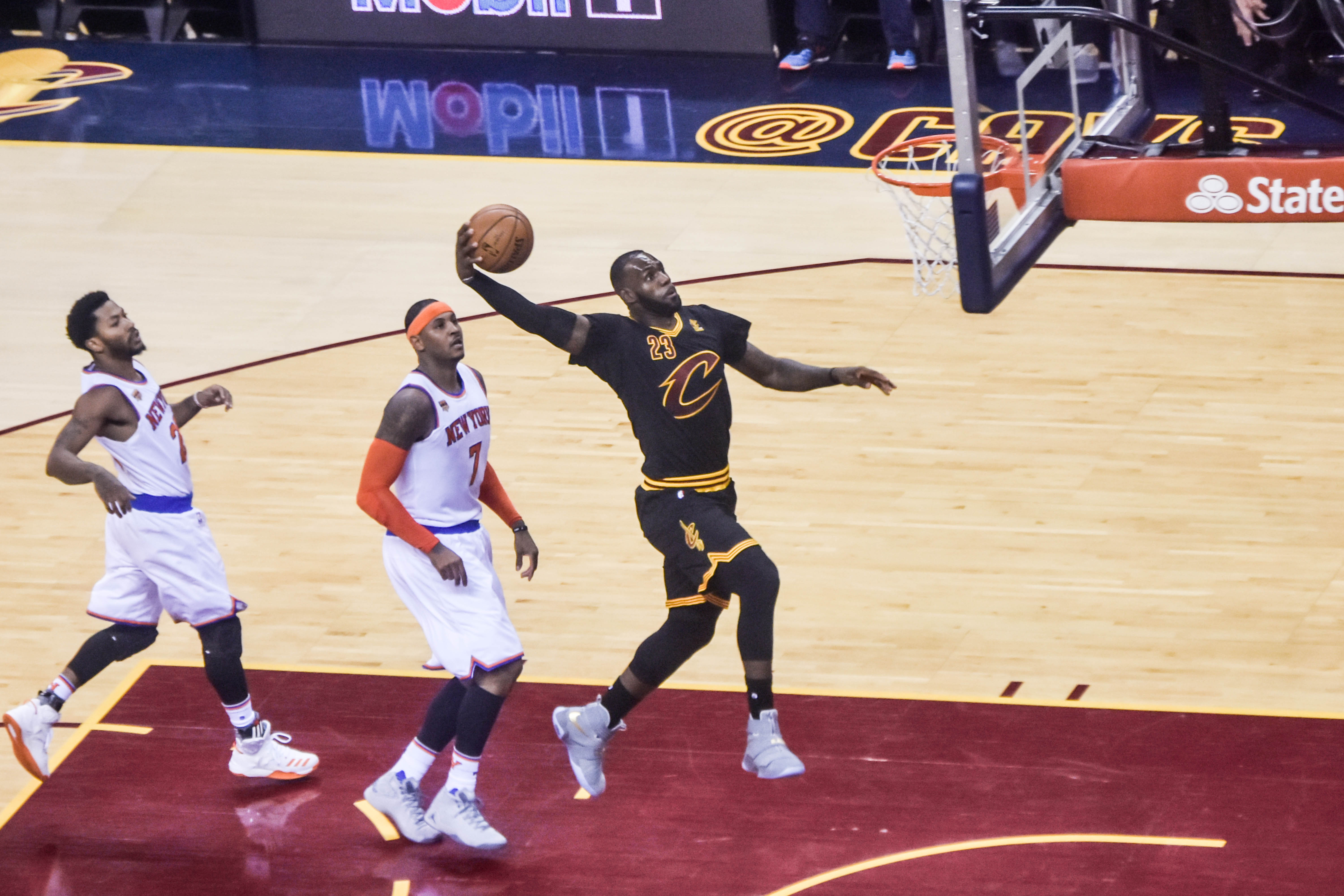
9. **Cleveland Cavaliers (2016–2018): The Second Departure**The Cleveland Cavaliers jersey from 2016 to 2018 represents the final, tumultuous years of LeBron James’ second stint with the franchise, a period that followed the euphoria of a championship but ended with renewed challenges and, ultimately, another departure. After delivering the city its first title, James opted out of his contract once more, re-signing with the Cavaliers on a three-year, $100 million deal, with a player option for the final year. The 2016–2017 season, however, proved to be one of the “strangest” of his career, as James later described it, marred by injuries, unexpected losses, and public criticism.
Following a January defeat to the New Orleans Pelicans, James publicly criticized Cleveland’s front office for constructing a team he felt was too “top heavy,” drawing counter-criticism in return. Despite these internal and external pressures, the Cavaliers finished the season as the East’s second seed, with James averaging 26.4 points and career highs in rebounds (8.6), assists (8.7), and turnovers (4.1) per game, showcasing his continued all-around dominance even amidst team struggles.
In the playoffs, James continued to break records and redefine what was possible. In Game 3 of the first round, he registered 41 points, 13 rebounds, and 12 assists against the Indiana Pacers, leading Cleveland to a comeback victory after trailing by 25 points at halftime—the largest halftime deficit overcome in NBA playoff history. His march through the postseason continued in Game 5 of the Eastern Conference Finals against the Boston Celtics, where he scored 35 points and surpassed Michael Jordan as the league’s all-time postseason scoring leader. The Cavaliers won the game and the series, advancing to their third consecutive NBA Finals, setting up another showdown with the Golden State Warriors, who had now added James’ rival Kevin Durant to their formidable roster.
The 2017 Finals saw James make history once again, becoming the first player to average a triple-double in the Finals, with averages of 33.6 points, 12.0 rebounds, and 10.0 assists per game. However, even his unprecedented individual brilliance was not enough to overcome the strengthened Warriors, and Cleveland was defeated in five games. This jersey, worn during these heroic but ultimately losing efforts, reflects the immense burden James carried and the near-impossible standards he consistently met.
The 2017–2018 season was marked by a significant roster overhaul, most notably the trade of Kyrie Irving to the Boston Celtics, a move that stemmed in part from Irving’s desire to no longer play with James. After a slow start to the year, the Cavaliers rebounded dramatically, winning 18 of 19 games in December, a turnaround ignited by James’ 57-point performance against the Washington Wizards on November 3, his second-highest career point total and a franchise record-tying effort. Despite a losing record in January and criticism for perceived lackluster effort, James earned his third All-Star Game MVP Award in February, posting 29 points, 10 rebounds, and eight assists. This Cleveland jersey from his second departure signifies the end of an era, a legacy cemented, but a clear signal that the pursuit of more championships would lead him elsewhere.
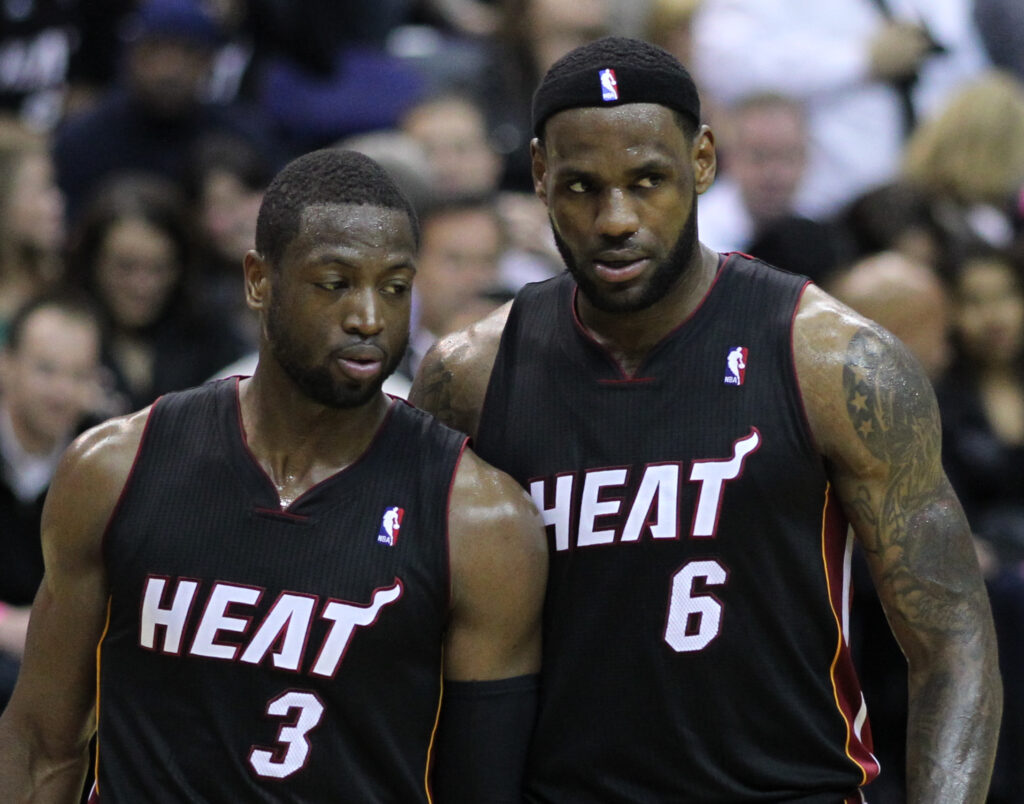
10. **Los Angeles Lakers (2018–2020): Hollywood’s Crown and Fourth Title**The iconic purple and gold jersey of the Los Angeles Lakers, donned by LeBron James starting in 2018, heralded the next audacious chapter of his illustrious career. This move to Hollywood was more than just a change of scenery; it was a testament to his ambition to prove his greatness across multiple franchises and in different competitive landscapes. His arrival immediately injected a new level of excitement and expectation into one of the NBA’s most storied organizations, setting the stage for a dramatic pursuit of a championship in the Western Conference.
The initial season with the Lakers was a period of adjustment, as James navigated a new team and a new conference, showcasing his adaptability and continued dominance as a primary playmaker and scorer. Despite the challenges of integrating new teammates and facing formidable Western Conference opponents, the foundation for future success was being laid. James remained a force, demonstrating that his unparalleled skill set could elevate any franchise, regardless of the significant changes around him.
The hard work and strategic team building culminated in the 2019-2020 season, a year unlike any other due to the global pandemic that saw the NBA season conclude in a protective ‘bubble’ environment. Under these unique circumstances, James led the Lakers with unwavering focus and leadership. His pursuit of greatness was palpable, guiding the team through the challenges of the playoffs, culminating in their advance to the NBA Finals.
In the Finals, James spearheaded the Lakers to victory, securing his fourth NBA championship. This triumph was particularly significant, as it made him the first player in NBA history to win Finals MVP with three different teams—a singular achievement that underscored his extraordinary ability to adapt and lead diverse rosters to the ultimate prize. The Lakers jersey from this period became synonymous with overcoming adversity, fulfilling championship aspirations in a new city, and further solidifying James’ status as one of the greatest winners the game has ever seen. It was a crown jewel in a career already glittering with accolades, proving that even as he entered the later stages of his career, ‘King James’ was still capable of reigning supreme.
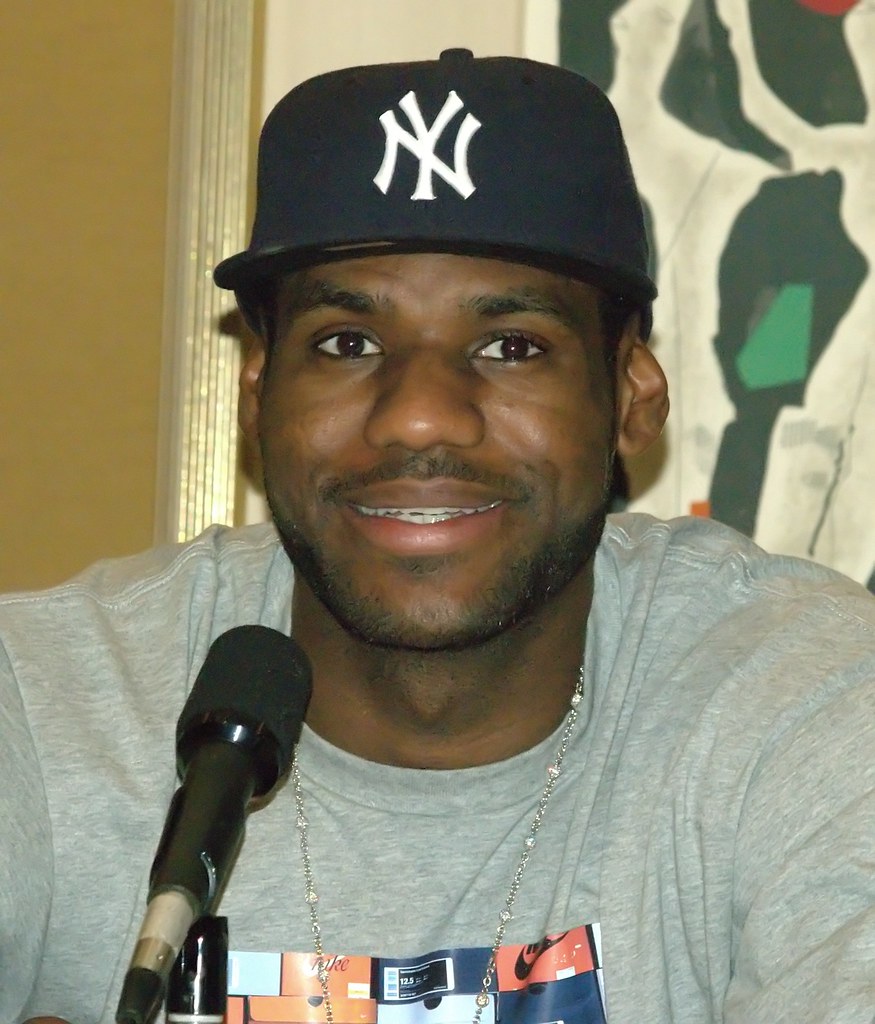
11. **Los Angeles Lakers (2020-Present): Elder Statesman and Record Breaker**The latest iteration of LeBron James’ Los Angeles Lakers jersey represents his remarkable journey as the league’s elder statesman, a period defined by record-breaking individual achievements, unparalleled longevity, and a continued commitment to winning. Despite being the oldest active player in the NBA, tied with Vince Carter for the most seasons played and holding the record for the most minutes played in league history, James has continually defied conventional wisdom about player decline. His presence on the court remains a formidable force, blending veteran savvy with flashes of the explosive athleticism that defined his earlier years.
In 2023, James achieved one of the most significant individual milestones in basketball history: he surpassed Kareem Abdul-Jabbar to become the NBA’s all-time leading scorer. This moment was a testament to his incredible consistency, durability, and relentless pursuit of excellence over two decades. The jersey he wore during that historic shot is more than just a uniform; it’s a tangible piece of history, marking the pinnacle of scoring prowess in a career dedicated to both individual and team success. This achievement, combined with his existing accolades like ranking fourth in NBA career assists and sixth in NBA career steals, solidifies his claim as one of the most versatile and impactful players ever.
Beyond the scoring record, James continued to push boundaries. In 2023, he led the Lakers to victory in the inaugural NBA Cup, adding another unique piece of hardware to his extensive collection and earning the NBA Cup MVP award. His international success also continued, as he earned three Olympic gold medals as a member of the U.S. national team, including being named the Olympics MVP in the 2024 Summer Olympics. These achievements underscore his enduring competitive drive and global impact on the sport.
A record 21-time All-Star and 21-time All-NBA selection (including a record 13 First Team selections), along with six All-Defensive Team selections, further illustrate his sustained excellence across all facets of the game. Perhaps one of the most heartwarming and unique moments of this later career stage occurred in 2024 when he and his son, Bronny James, became the first father-son teammates in league history, creating a generational legacy right before our eyes. This incredible feat highlights not only his unprecedented longevity but also his desire to share the court with his son.
Looking ahead, James’ legacy has already begun to be formally recognized, as he was inducted into the Naismith Memorial Basketball Hall of Fame in 2025 as a member of the legendary 2008 U.S. Olympic team, also known as the “Redeem Team.” This induction, alongside Chris Paul, marked a historic occasion as they became the first NBA players inducted into the Hall of Fame while still active. This Lakers jersey, representing his journey from a new beginning in Los Angeles to becoming an undisputed legend and an active Hall of Famer, captures the essence of a player who has not only redefined his own career but continuously reshaped the entire landscape of professional basketball, proving that the King’s reign continues, even in his twilight years.
From the humble beginnings in Akron to the bright lights of Hollywood, LeBron James’ journey has been a masterclass in adapting, evolving, and dominating. Each jersey in this collection is more than just an item of clothing; it’s a chapter in an unfolding epic, a testament to the unyielding spirit of a player who dared to challenge the limits of what one athlete could achieve. These threads, imbued with the sweat of countless battles and the joy of numerous triumphs, offer a vivid, tangible timeline of a career that continues to inspire, astonish, and fundamentally alter our understanding of basketball greatness. The story of ‘King James’ is far from over, but the jewels in his crown, these iconic game-worn jerseys, already tell a tale of unparalleled sporting hierarchy that will resonate through generations of basketball fans.



